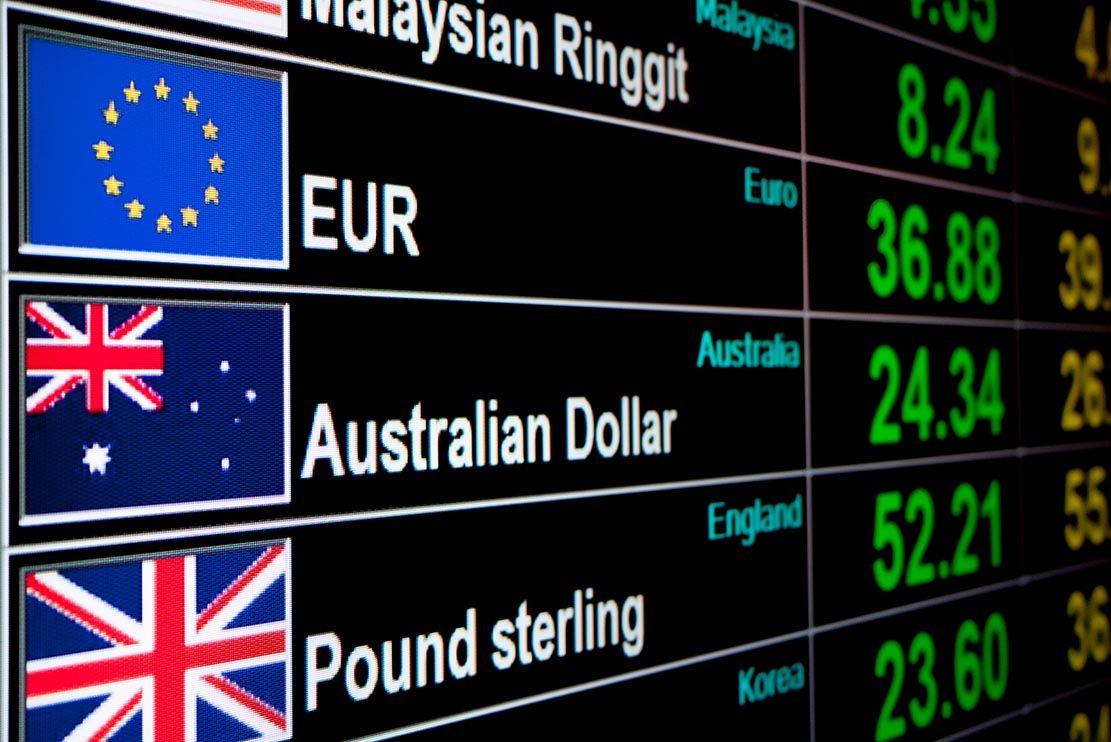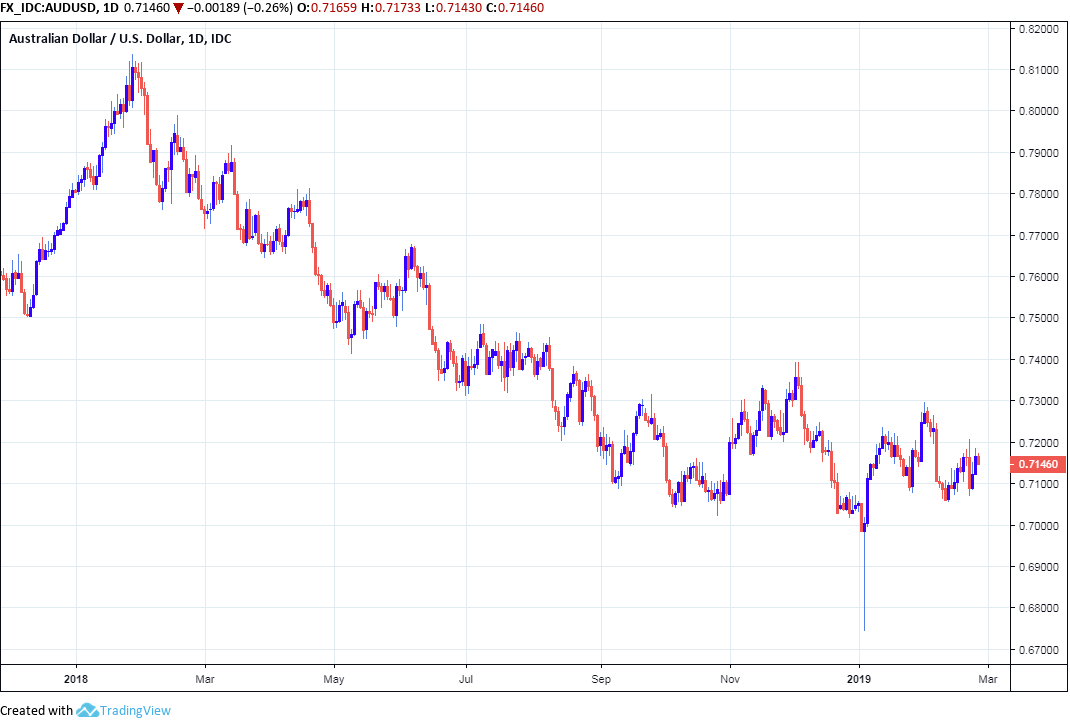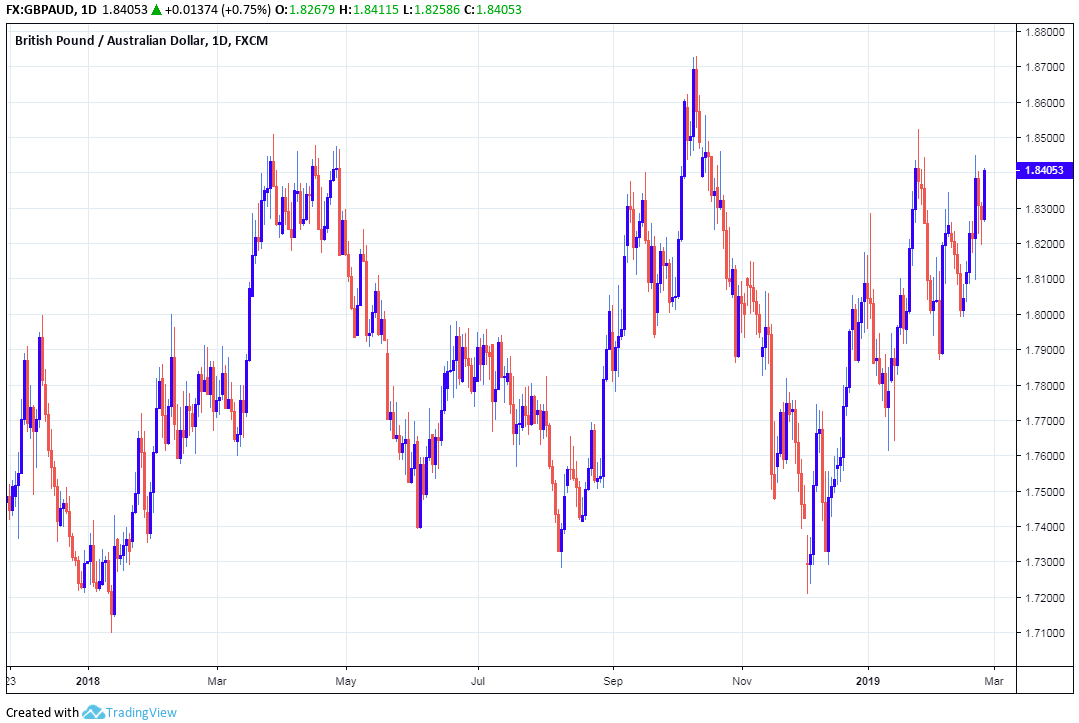The Australian Dollar Pares Gains as Analysts Eye Scope for "New Uncertainties" in U.S.-China Talks
- Written by: James Skinner

Image © Adobe Stock
- AUD slips and risk markets soften as rally from Trump's truce fades.
- Markets eye domestic drivers, with construction, investment data up.
- Xinhua has already warned of "new uncertainties" in U.S.-China talks.
The Australian Dollar slipped from recent highs Tuesday as risk-assets softened in the wake of a strong run at the beginning of the new week and as markets renew their focus on domestic drivers of the currency.
Construction output figures for the final quarter are due to be released in the early hours of Wednesday morning while the business capital expenditures report for the same period will be published on Thursday morning, both of which will help analyst gauge the likely pace of growth toward year-end.
The ebb and flow of economic growth will be important for the Aussie over the coming months given the Reserve Bank of Australia (RBA) recently warned that it could cut interest rates if the labour market or broader economy deteriorate in the months ahead.
"We expect Dec qtr construction work done to be unchanged, as higher engineering is offset by a step down in residential and non-residential construction. The dwelling and engineering outcomes are fed straight into Dec qtr GDP," says Annette Beacher, head of Asia Pacific strategy at TD Securities.
This week's data comes after President Donald Trump said on Monday that tariffs on Chinese goods imported into America will not rise any further next month, although analysts are already warning of "uncertainties" that could disrupt the newfound peace up ahead.
President Trump said in a Twitter post that tariffs on some of China's exports will no longer rise to 25% on March 01, as they had been scheduled to, after negotiators made progress on a range of important issues including intellectual property theft and foreign exchange policy.
The foreign exchange pact that is intended to prevent China from gaining competitive advantage over other countries by devaluing its Renmimbi could be a positive game-changer for the Aussie, as the Antipodean unit has a strong positive correlation with China's currency.
Talks are set to continue for a while yet but will eventually conclude with a preplanned ceremony at Trump's Mar-a-Lago resort where leaders from the world's two largest economies will sign a memorandum of understanding setting out terms of the future relationship.
Monday's statement prompted a bid for China-exposed assets like the Aussie, while seeing the U.S. Dollar soften against G10 rivals, as markets celebrated its positive implications for the Chinese and global economies.
"Tweets and the like indicate that a more substantive deal may be in the works that could address structural issues related to intellectual property theft and forced technology transfers. This setup suggests risk should extend its leg up. This should compel AUD and NZD to trade on the front foot," says Mazen Issa, another strategist at TD Securities.
The White House has imposed tariffs that range from 10% to 25% on Chinese goods exports to the U.S. that are worth around $250 billion each year. And it threatened to raise all those tariffs to 25% and target the remaining $267 bn of China's U.S.-bound exports if it's "unfair trading practices" aren't resolved.
Those tariffs and associated threats have weighed on the Aussie because its is substantially underwritten by a large bilateral commodity trade between Australia and China, which is now under threat from Chinese actions that are unrelated to the trade war.

Above: AUD/USD rate shown at daily intervals.
The AUD/USD rate was quoted -0.25% lower at 0.7152 Tuesday and is now up 1.44% for 2019, although it had wracked up a 2.7% gain at one point in January.
"Brent prices have dipped to $67 p/b but that hasn't damaged sentiment. Short EUR/AUD, or EUR/NOK and short USD/CAD are all trades that can start the week well" says Kit Juckes, chief FX strategist at Societe Generale.
The Pound-to-Australian-Dollar rate was 0.41% higher at 1.8377 and has now risen 1.55% for 2019. The Aussie was lower against all G10 currencies Tuesday, while sock markets and oil prices were also down.
"For the USD, the result of a more substantive currency pact adds to what is an already softening pillar of support. These include a narrowing yield advantage over its peers, concerning fiscal balances (a revival of twin deficit pressures) and an expected softening in macro momentum. The timing of a turn is elusive however, mostly because its peers are not ready to steal the limelight just yet," says TD's Issa.

Above: Pound-to-Australian-Dollar rate shown at daily intervals.
President Trump's tariffs have hurt the Chinese economy and driven a slowdown in global growth too, particularly in the Eurozone, where there is a large factory sector that does a lot of business with both China and the U.S. It's also roiled global financial markets, but particularly stock markets.
Monday's announcement provided a glimpse of which currencies could benefit the most if a deal ending the trade war is in fact finalised over the coming weeks and months.
"The CNY rally is largely driven by the recent developments on trade talks and China’s economic situation. But given the uncertainties and risks ahead, we do not believe it is justified that the CNY should continue to appreciate significantly," says Hao Zhou, an analyst at Commerzbank.
The rub for the Aussie is that nothing has been formally agreed so far and China's state-ran news agency Xhinhua has already published an editorial warning of "uncertainties" that could scupper a deal during the next phase of the negotiations.
Xhinhua says "there needs to be a sober mind" about the fact "trade frictions are long-term, complicated and arduous, which almost vindicates the scepticism that was immediately expressed by some analysts after Trump's Monday announcement.
"The Nazi-Soviet Pact of 1939 saw Berlin and Moscow agree they both hated the liberal world order more than each other, and the Soviets sell goods including oil, gas, and trans-shipments of soy(!) to resource-short Germany in exchange for low-cost loans and technology. 22-months later, Operation Barbarossa showed what the real game being played was," says Michael Every, a strategist at Rabobank. "This proposed trade deal sounds like the Nasty-Soviet, or Donaldtov-Xibbentrop Pact."
Rabobank's Every says the White House's push to end Chinese subsidisation of domestic companies is effectively a request for it to change its entire economic and political model overnight, while demands for the Renmimbi to be kept stable are asking the impossible.
Every has warned Rabobank's clients that the deal is likely to provide financial markets and the global economy with 21 months of peace, at most, before another tariff conflict erupts over non-compliance with or failings of the original deal that is due to be signed in the coming weeks.
"In short, despite talk of friendship and partnership and trade, both sides will use the 21- month period to prepare for the next, more serious round of economic/political conflict," Every warns. "They don’t want war but they can’t get the China they need for economic coexistence."
Every says Monday's deal will give President Trump the cover he needs in order to not risk upsetting the U.S. economic applecart ahead of the 2020 presidential election, in which Trump may seek a second term in office, while it should give China additional time to prepare for a potentially more damaging trade conflict. Every is not alone either.
"Nothing has been confirmed and we think it will be impossible for China to conform to US demands on substantive core issues. But that’s for another day," says Sue Trinh, head of Asia FX strategy at RBC Capital Markets. "All eyes on USTR Lighthizer’s testimony in Congress on Weds; needless to say, headline risk over coming days/weeks is acute."
Time to move your money? Get 3-5% more currency than your bank would offer by using the services of foreign exchange specialists at RationalFX. A specialist broker can deliver you an exchange rate closer to the real market rate, thereby saving you substantial quantities of currency. Find out more here.
* Advertisement




